When we feel physically stiff, stuck and stagnant it makes sense to move our bodies in any possible way to release the stiffness out of our body. Movement forms like dancing can do more than only relieving physical stagnation. It seems as if dancing also has the ability to tackle our cognitive functioning. With the help of dancing, we can overcome mental blockages and obstacles and train our brain to think differently.
Especially if confronted with a problem that seems hard to solve and for personal development, dancing can be extremely beneficial.
Dancing as a means for problem-solving
Who doesn’t know that situation? We are confronted with a problem in our private or professional life, some kind of issue or obstacle that we cannot solve, no matter how long we are agonizing about the issue. The reason we cannot figure out a solution is because we are stuck in the same old thinking patterns over and over again. In order to overcome difficult dilemmas, we need to adopt a new mindset and tackle the issue from a fresh insight. But how?
Dancing has been shown to be able to change thinking patterns and help problem-solving. Dr. Peter Lovatt, head of the Dance Psychology Lab of the University of Hertfordshire, United Kingdom states:
“We’ve had people in the lab dancing and then doing problem-solving – and different sorts of dancing help them with different sorts of problem-solving.”
There are two different types of thinking involved in problem-solving behavior, divergent thinking, and convergent thinking. Dr. Lovatt found out that different kinds of dance stimulate different kinds of problem-solving. Improvised forms of dance help with divergent thinking, providing multiple answers to a problem. Structured forms of dance with a clear choreography, for example, helps with convergent thinking - finding a single solution for a problem.
The form of dance thus determines the solution for a problem. Particularly important is the fact that both thinking techniques lead to a solution for a problem and invite thinking differently than the subject would usually do.
Divergent thinking is a creative, open-ended form of thinking aimed at generating fresh views and novel solutions. Several ideas are brainstormed and followed in different directions. Divergent thinking is therefore very useful when we are confronted with a problem that requires a creative, out-of-the-box kind of solution.
Convergent thinking is a problem-solving technique where different ideas from different fields are brought together and synthesized into one optimum solution for a problem. It makes sense to use convergent thinking to tackle clearly-defined problems that demand one clear solution.
The cure is easy: if you are looking for multiple, creative solutions, dance freely. If you have one clearly defined problem that requires an optimum solution, use a structured form of dance.
2. Dancing can help Parkinson’s disease
Enhancing problem-solving skills is only one way how dancing is able to help your cognitive functions. Dancing has even been shown to help in the treatment of Parkinson’s disease. Parkinson is a condition that belongs to a group of motor-system-disorders.
Parkinson develops when certain nerve cells in the brain that produce dopamine gradually decrease or die. The neurotransmitter dopamine is an essential component of the brain’s system of coordination and movement control. When dopamine levels decrease as these cells die off, they cause abnormal brain activity, leading to Parkinson’s disease.
Symptoms include muscle rigidity, tremors, slowed movement, impaired balance and changes in speech. In its later stages, Parkinson seriously worsens motor symptoms and patients are often not able to walk anymore, requiring a wheelchair.
However, research suggests that dance can alleviate the symptoms of Parkinson. Parkinson's can lead to a disruption in divergent thinking processes. Rhythmic dancing helps to stimulate an increase in the neurotransmitter dopamine. Patients with Parkinson’s who engage in dancing and rhythmic movement classes on a regular basis have been found to speak and walk better.
More research regarding the ways dancing influences neural processing is currently being conducted and demonstrates how dancing could possibly lead to the development of new neural pathways in Parkinson patients.
3. Our brain is like a muscle
Dancing has deep impacts on our brain. It secretes the hormone endorphin in large quantities within the brain, which makes us feel happy and blocks pain receptors in the brain.
Dance also has positive influences on our neuroplasticity positively, slows down the aging process and helps memory. People who dance regularly have better cognitive reserves and more neuronal synapses which also show increased complexity. Dancing might be able to continually rewire and create new neural pathways. This is great news for our cognitive function, showing us how dancing can assist in restoring memory, building curiosity and aiding in the learning process.
In essence, our brain is like a muscle, it can be trained. Dancing can help in training our brain to reach its optimum function for better memory, improved problem-solving and growing our mindset. Our brains are plastic in a way that they can be molded and rewired. New neural pathways are emerging with the help of dancing, giving us new ways of seeing the world and improving cognitive function.
In this respect, as German dance legend and pioneer Pina Bausch already knew:
Dancing seems to be an effective and enjoyable way to change our mindsets and loosen our stuck bodies as well as thinking patterns.
“Dance Dance, otherwise we are lost.”
If you feel stuck in a circling thought pattern if you would like to grow your mindset or also if you just feel like dancing for the sake of dancing, join us for one of our wonderful dance events.
Written by Clara Malzer

